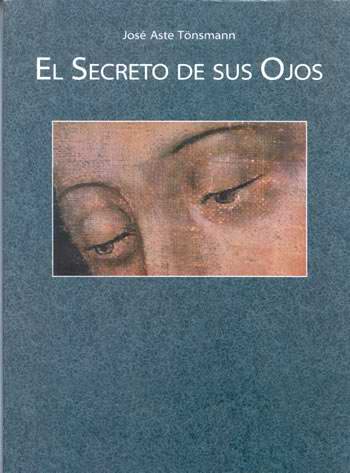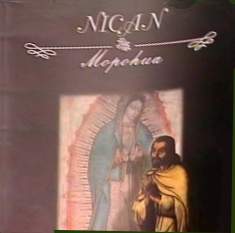Literature on Apparitions
El Secreto de sus Ojos: Estudio de los Ojos de la Virgen de Guadalupe
José Aste Tönsmann
México: Tercer Milenio S.A., 1999
 In 1531, ten years after the Spanish conquered Mexico, as Juan Diego came before the bishop to present to him roses which he gathered in December, the image of Our Lady of Guadalupe was revealed on the cloak which contained the roses. Each year, ten million people visit the shrine of Our Lady of Guadalupe in Mexico City where Juan Diego's cloak is on public display. For more than four centuries, the image of Our Lady of Guadalupe has been an object of veneration and also of investigation.
Beginning in the seventeenth century, studies were made into the style of the painting, the origin, a possible relation to some other style. The preservation of the painting on the cactus cloth, which should have deteriorated after twenty years, and the unfading brightness of the colors remain unexplainable. Infrared photography and computer enhancement of the image, begun in the 1980's could not find the "under sketch" which most artist would need for such work. This finding - plus the style, the colors, the design, and the preservation - caused the investigators to conclude that the work was the result of many "impossible coincidences."
In 1531, ten years after the Spanish conquered Mexico, as Juan Diego came before the bishop to present to him roses which he gathered in December, the image of Our Lady of Guadalupe was revealed on the cloak which contained the roses. Each year, ten million people visit the shrine of Our Lady of Guadalupe in Mexico City where Juan Diego's cloak is on public display. For more than four centuries, the image of Our Lady of Guadalupe has been an object of veneration and also of investigation.
Beginning in the seventeenth century, studies were made into the style of the painting, the origin, a possible relation to some other style. The preservation of the painting on the cactus cloth, which should have deteriorated after twenty years, and the unfading brightness of the colors remain unexplainable. Infrared photography and computer enhancement of the image, begun in the 1980's could not find the "under sketch" which most artist would need for such work. This finding - plus the style, the colors, the design, and the preservation - caused the investigators to conclude that the work was the result of many "impossible coincidences."
But it is the eyes of the image which have fascinated investigators for the past fifty years. In the last century, two nineteenth-century ophthalmologists (Purkinje and Sanson) discovered that whatever is seen in the eye is also reflected in the eye (acutally reflected in three places due to the curvature of the cornea). In the 1950's, an examination of the eyes of the image, by Dr. Rafael Torija-Lavoignet, identified the figure of Juan Diego. The most recent investigations of the eyes were conducted by Dr. José Aste Tönsmann, (Ph.D., Cornell University, Systems Engineering) who applied the same techniques used to interpret images received from surveillance satellites. The eyes of the image (about 8 millimeters), were amplified 2500 times. The photos were digitally processed, and filters were used to separate the layers within the images. Dr. Tönsmann found more than the image of Juan Diego. Within the eyes were a group of thirteen people, including Bishop Zumarraga, Juan Diego, a seated Indian figure, a younger man acting as interpreter for the bishop, a male and a female with African characteristics (referred to in Zumarraga's will), the governor of the colony (Sebastian Ramirez y Fuenleal, and, standing in the back a family group (man, woman, and several children). The same thirteen images, save one, are found in both eyes, This discovery of the family group in the Virgin's eyes, Dr. Tönsmann concluded, may be a "hidden message," reserved for our time, intended to strengthen family life.
Nican Mopohua (in polish)


On one side polish translation, on the other spanish.